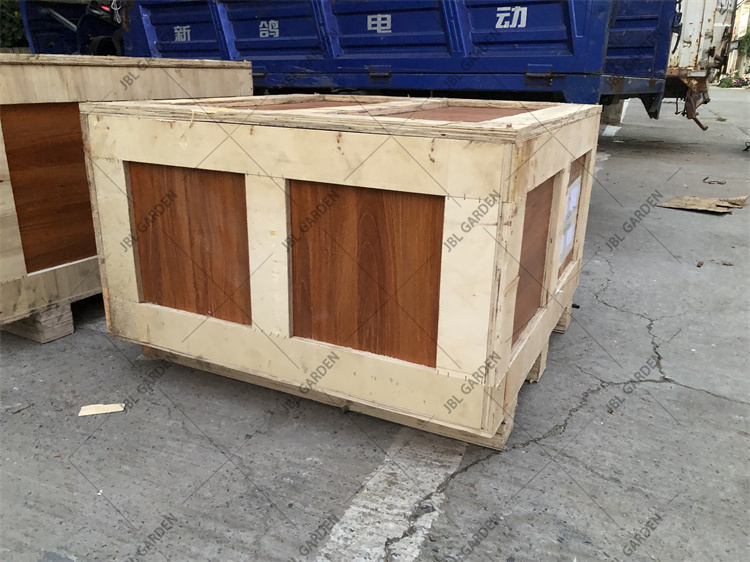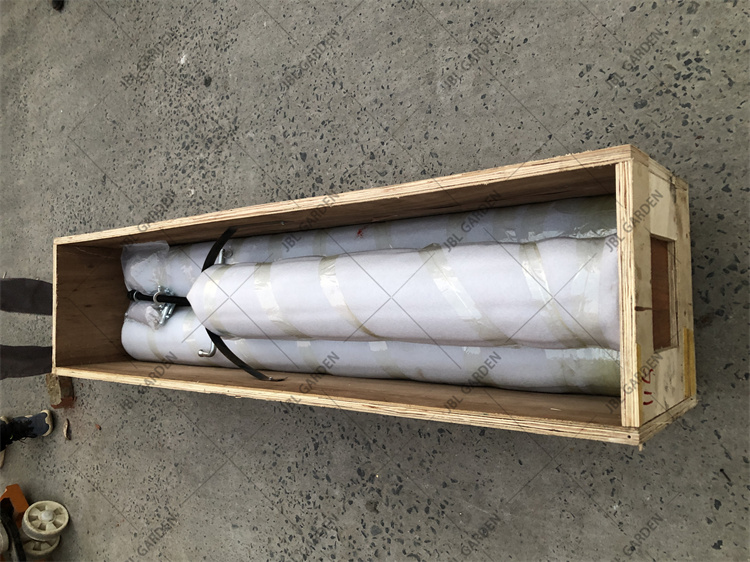[method 1]
Degreasing commonly used solvents: trichloroethylene, acetone, butanone, ethyl acetate.
[Method 2]
After sandblasting or emery cloth, it is roughened and degreasing.
[Method 3]
Dipping in the following solution at 25-30 ° C 1min;
Concentrated sulfuric acid 8 concentrated nitric acid 25 water 17
It is then washed with water and dried at 50-60°C.
[Method 4]
Immerse in the following solution at 60-70 °C for 10 min:
Concentrated sulfuric acid 40 Iron sulfate 4.5 Water 38
It is then washed with water and dried at 60-70°C.
[Method 5]
Immerse for 10-15min at 25-30°C in the following solution:
Concentrated sulfuric acid 10 sodium dichromate 5 water 85
Then it was washed with water and dried at room temperature.
[Method 6]
Immerse 1-2min at 25-30°C in the following solution:
Ferric chloride 15 Concentrated nitric acid 30 Water 200
Then it was washed with water and dried at room temperature.
[Method 7]
After degreased, it was etched in the following solution for 10 minutes at a temperature of 66-71°C:
Iron sulfate 4.5 Concentrated sulfuric acid 3.4 Water 450
Then wash in cold water at 20 °C for 5 min, then dip in the following solution:
Sodium dichromate 5 Concentrated sulfuric acid 10 Water 85
Then wash in cold water, immerse in ammonium hydroxide (d = 0.85) for 10 min, rinse with cold water for 5 min, wash with distilled water, and dry at 40 °C. This method is used for brass and bronze treatment.
[Method 8]
Oxidation in the following solution:
Potassium persulphate 1.5 Sodium hydroxide 5 Water 100
Immerse for 15-20min at 60-70°C, the surface is black, wipe once with carbon tetrachloride before glueing. This method is used for copper foil processing.
Fourth, stainless steel surface treatment method [Method 1]
Degreasing common solvents: trichloroethylene, acetone, butanone, benzene, ethyl acetate.
[Method 2]
After sandblasting or emery cloth, it is greased.
[Method 3]
Immerse in the following solution at 70-85 °C for 10 min:
Sodium silicate 6.4 Sodium pyrophosphate 3.2 Sodium hydroxide 3.2 Detergent powder 1 Water 32
After washing with cold water, dry at 93°C.
[Method 4]
After degreased, immersed in the following solution for 10 minutes at a temperature of 80°C, PH=12.65:
Sodium Phosphate 8.5 Sodium Pyrophosphate 4.2 Sodium Hydroxide 4.2 Surfactant 1.4 Water 380
Take out the water and dip in the following solution at 65 °C for 3 min:
Chrome oxide 20 water 380
After washing and drying.
[Method 5]
Immerse in 65-70°C for 5-10min in the following solution:
Hydrochloric acid (37%) 2 Hexamethylenetetramine 5 Water 20
Then 30% hydrogen peroxide was added, and the water was taken out and dried at 93°C.
[Method 6]
Immerse in 50°C for 10min in the following solution:
Potassium dichromate saturated solution 0.35 Sulfuric acid (d=1.84 ) 10
Then the carbon residue was brushed off, washed with distilled water, and dried at 70°C. This method is suitable for applications where maximum peel strength is required.
[Method 7]
In lead-lined tank, the concentration of sulfuric acid is 500g/l, anodization is 90s, voltage is 6V, rinse with water, wash with distilled water, dry at 70°C, and the adhesive is an anode, after treatment, in a 5-10% chromium oxide solution Passivation for 20 minutes.
[Method 8]
Immerse in 85-90°C for 10min in the following solution:
Oxalic acid 37 Sulfuric acid (d=1.84) 36 Water 300
After washing with distilled water, dry it with warm air.
[Method 9]
After degreased, immersed in a solution at 65°C for 10 minutes:
Hydrochloric acid (d=1.19) 52 Hydrogen peroxide (30%) 2 Formaldehyde (38%) 10 Water 45
After washing with water, immersed in the following solution for 10 minutes at a temperature of 65°C:
Sulfuric acid (d=1.84) 100 sodium dichromate 10 water 30
After washing with distilled water, it was dried at 70°C.
[Method 10]
After washing with water-soluble industrial soap, 40°C hot water for 5 minutes, 120°C drying, then dipping in the following solution at 100°C for 2 minutes:
Hydrochloric acid 200 Phosphoric acid 30 Hydrofluoric acid 10
It was washed with hot water at 40°C for 5 minutes and dried at 40°C for 30 minutes.
Fifth, carbon steel and ferroalloy surface treatment methods
[method 1]
Degreasing commonly used solvents: trichloroethylene, acetone, ethyl acetate, gasoline, benzene, anhydrous ethanol.
[Method 2]
Sandblasting or emery cloth after grinding and degreasing.
[Method 3]
It was dipped in a 10% aqueous solution of water glass at 60°C for 10-15 minutes, then washed with water and dried.
[Method 4]
It was dipped in 18% aqueous hydrochloric acid at room temperature for 5-10 min, washed with cold water, washed with distilled water, and dried at 93° C. for 10 min.
[Method 5]
The mixture was treated with an equal amount of concentrated phosphoric acid and formaldehyde at 60C for 10 minutes, then washed with water and dried.
[Method 6]
After degreasing, immersing in 3.5% sodium hydroxide solution at 60°C for 20 minutes, rinsing with cold water, and then photochemicalizing in 5% nitric acid solution for 10 min, rinsing with cold water, and then immersing in the following solution:
Sodium dichromate 7.5 Sulfuric acid 24 Water 77
After being immersed for 20 minutes at 65°C, it was washed with 60°C hot water, washed with cold water, and dried at 70°C.
[Method 7]
Immerse in 71-77°C for 10min in the following solution:
Sodium dichromate 4 Sulfuric acid (d=1.84) 10 Water 30
After washing, distilled water, dried at 93 °C.
[Method 8]
Immerse in 60-65°C for 5min in the following solution:
Sodium Silicate 30 Sodium Alkyl Sulfonate 3 Water 967
After washing, hot distilled water was washed and dried at 100-105°C.
[Method 9]
Immerse in the following solution at 60 °C for 10 min:
Phosphoric acid (88%) 10 Ethanol 20
Carbon slag was washed away by running water, washed with distilled water, and dried at 120° C. for 30 minutes.
Six, titanium and titanium alloy surface treatment methods
[method 1]
Degreasing commonly used solvents: trichloroethylene, acetone, butanone, benzene, ethyl acetate, gasoline, anhydrous ethanol.
[Method 2]
After degreased, immersed in the following solution at 20 °C for 5-10 minutes:
Sodium fluoride 2 Chromium oxide 1 Sulfuric acid (d=1.84) 10 Water 50
After washing with water, wash with distilled water and dry at 93°C.
[Method 3]
Treat in the following solution at 20 °C for 2 minutes:
Hydrofluoric acid (conc.) 84 Hydrochloric acid (37%) 8.9 Phosphoric acid (85%) 4.3
Rinse with water, rinse with distilled water, and dry at 93°C.
[Method 4]
After degreasing, wash with a basic aqueous solution and then treat in the following solution at room temperature for 4-6 min:
Nitric acid (70%) 5 Ammonium fluoride 3 Water 92
After washing, treat in the following solution at room temperature for 2min:
Trisodium phosphate 5 Sodium fluoride 1 Hydrofluoric acid 1.5 Water 92.5
After washing and drying.
[Method 5]
After degreasing, scrub with the following solution for 2-3min:
Trisodium phosphate 5 Sodium fluoride 1.3 Hydrofluoric acid 2.9 Water 90.8
After washing, dry at 60°C.
Seven, zinc and zinc alloy surface treatment methods
[method 1]
Degreasing commonly used solvents: trichloroethylene, acetone, butanone, ethyl acetate, gasoline.
[Method 2]
After degreased, immersed in the following solution at room temperature for 2-4min:
Hydrochloric acid (37%) 10-20 Water 90-80
Wash with warm water, wash with distilled water, dry at 66-71 °C for 30 min.
[Method 3]
Immerse in 3-6min at 38°C in the following solution:
Sulfuric acid (d-1.84) 2 Sodium dichromate 1 Water 8
Rinse with cold water, wash with distilled water, and dry at 40°C.
Source: 21st Century Fine Chemicals Network
The fusion of traditional technology and modern aesthetics behind each product is a deep exploration of the material and structure. With "steel" as the medium, the pure manual process journey is opened to convey the Fireplace culture and design ideas to the whole world.From the profound interpretation of contemporary industrial design, strict selection of each raw material, strict control of each process, so that made in China gives new meaning to the fireplace with traditional handwork and modern aesthetics, paying tribute to consumers.Select strong, fire-resistant high carbon steel surface imported heat - resistant paint. Skillfully use modern technology and traditional manual combination to provide high quality products.The use of high carbon steel, molten metal, heat-resistant paint and the minimalist design in line with the current international trend make it a timeless work of art. Made in China makes Mevera fireplace more trusted by people.
| Name | Hanging steel brazier firepit |
| Material | Corten steel |
| Cooking plate Size | Diameter 800mm |
| Weight | 65KG |
| Packing | wooden box packing |

Packing
Packing will by wooden box.


Ethanol Fire Pit,Bio Ethanol Fire Pit,Alcohol Fire Pit,Biofuel Fire Pit
Henan Jinbailai Industrial Co.,Ltd , https://www.hnjblfirepit.com